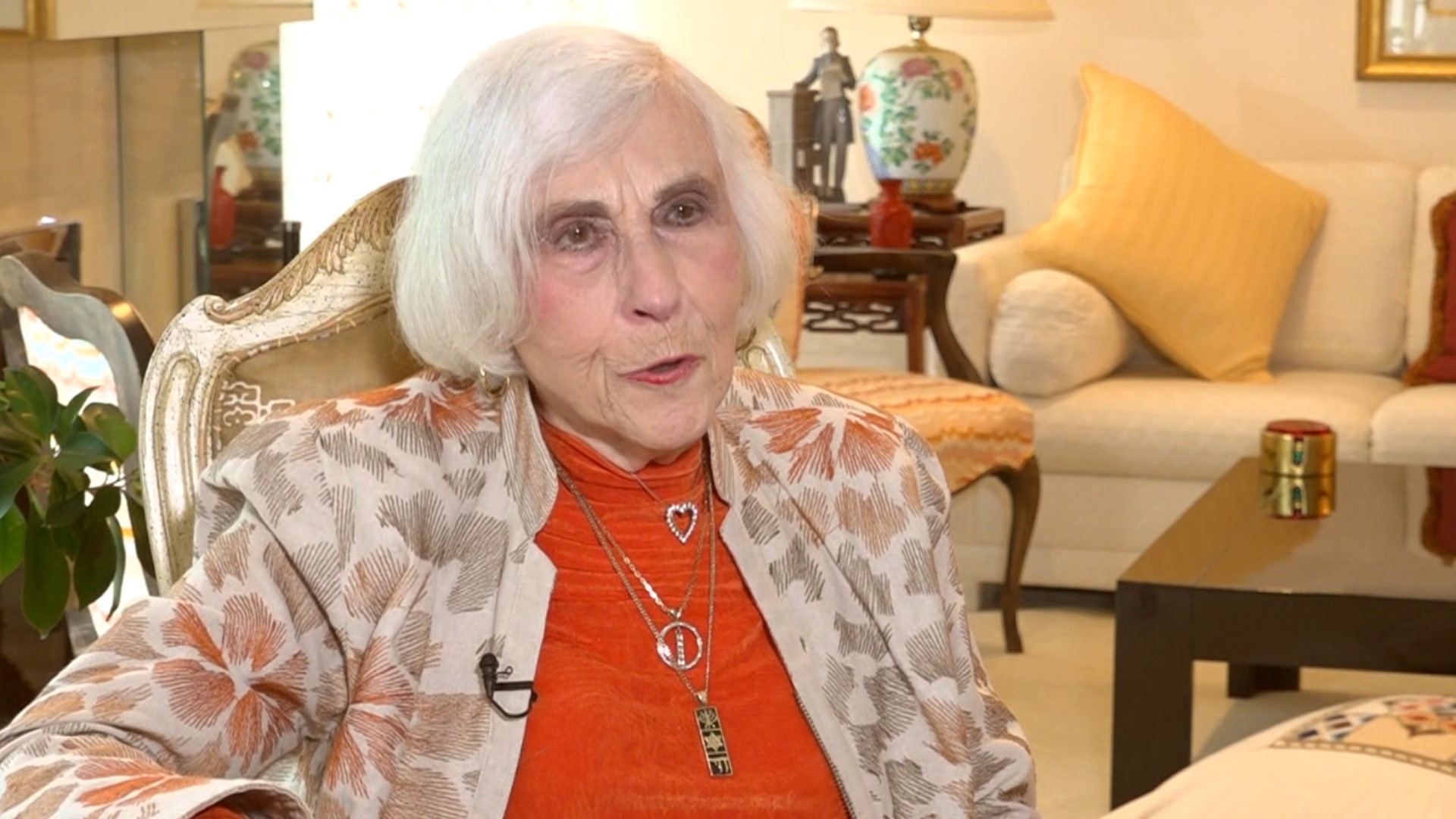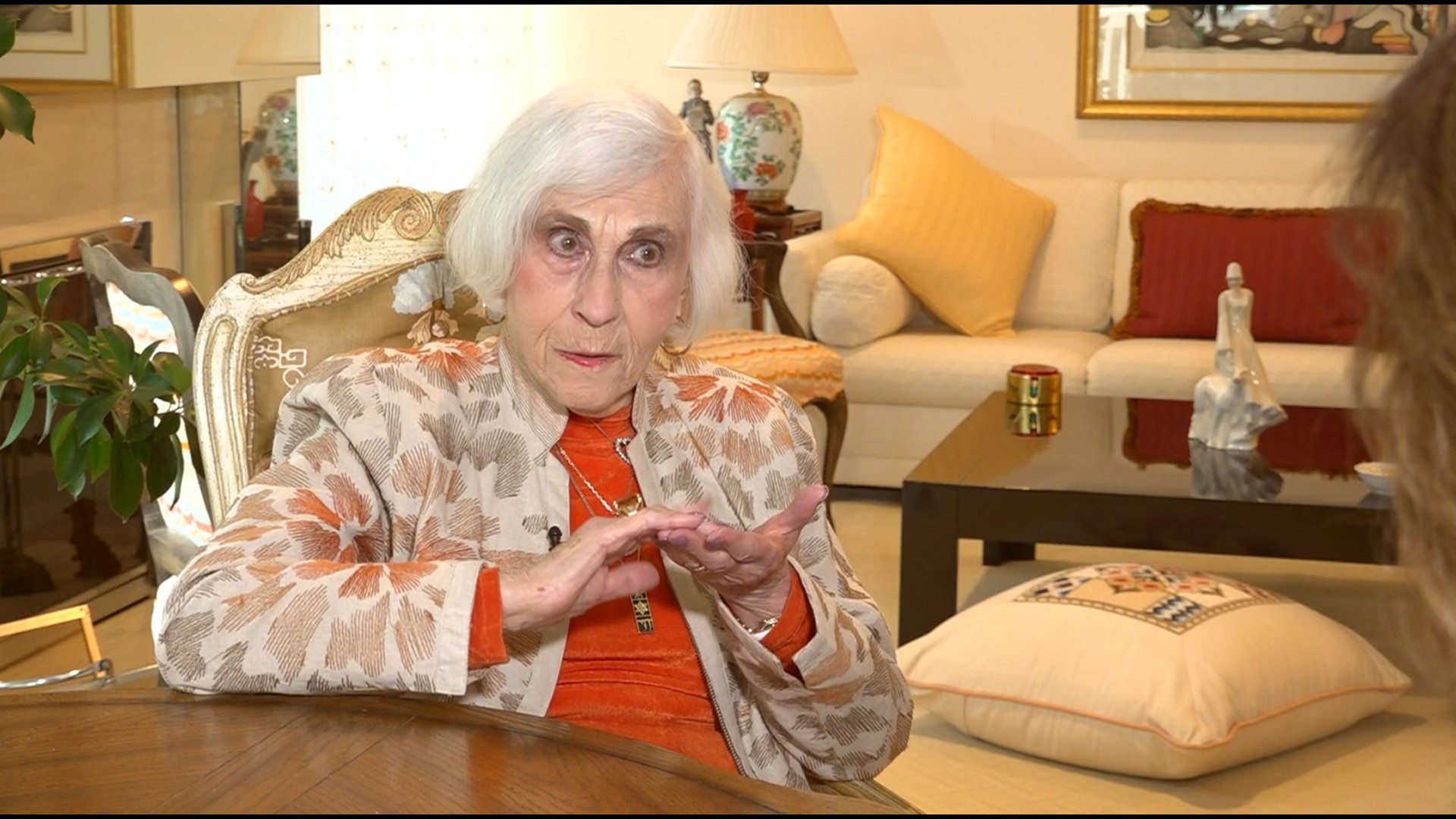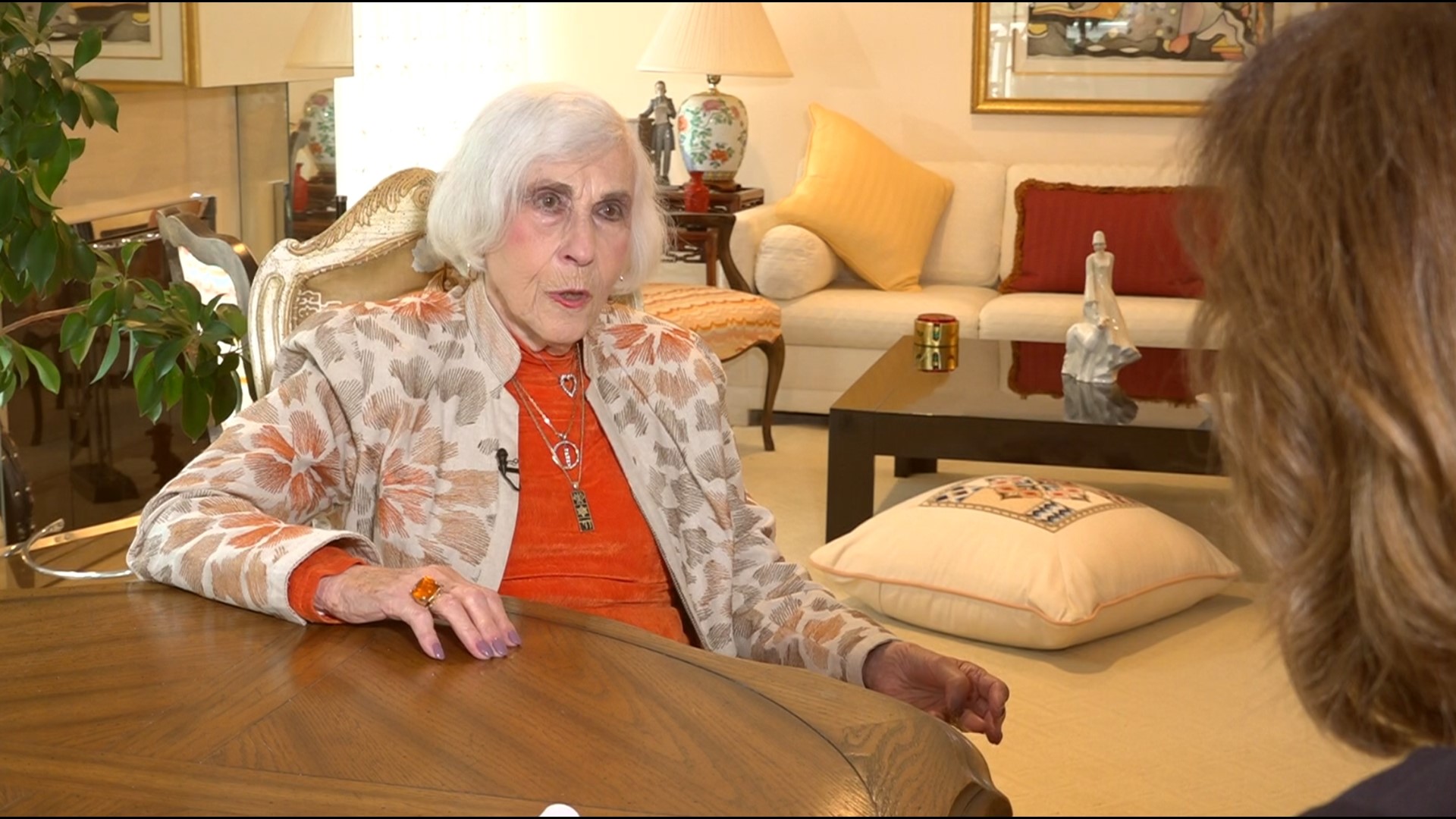ST. LOUIS — It’s undoubtedly one of the darkest atrocities the world has ever seen.
In a push to create a master race, Nazi Germany systematically murdered more than six million Jews and an estimated five million Soviet prisoners of war and other persecuted people in the 1930s and 40s.
The Holocaust was the result of an orchestrated campaign that would only end with the Nazi’s defeat in World War II.
Note: This story is featured in our special program, Race: Listen. Learn. Live. Fighting Antisemitism. Watch the special here.
Rachel Miller, 90, of Chesterfield, Missouri, was a child living in France when she survived this crime against humanity.
And she warns, our government is not prepared to stop it from happening again.
"It all started with Hitler,” said Miller. “And we have a few people in this country that resemble him, and that scares me."
Miller not only has a profound sense of the past repeating itself, it's a past still so vivid, she can hold it in her hands.
It's a perfectly preserved yellow star, a badge European Jews were ordered to wear following Germany’s invasion of Poland. Miller wore one as a child at the start of World War II. For her, it's a reminder of the extreme brutality that can grow out of intolerance.
"We had to wear this,” explained Miller. "That meant that we were subhuman. We had no right to exist."
Born in Paris, France, in the 1930s, her idyllic childhood was shattered at the age of nine. Intermittently sent to forced labor camps, Miller’s father and his brother were often gone for long periods of time.
“But people were still getting out of the camps," recalled Miller. “I mean, they would be sent there for a few months and then sent home. They lost lots of weight and it was terrible. And some of them never, never came back.”
When they returned home in December of 1941, they were so ill, they needed to be hospitalized.
“They died in two separate hospitals, but at the same time, and on the same day,” said Miller. “That's when I realized there was something wrong. I found out subsequently, many years later, that my father and my uncle, they were experimented upon.”
Then, in the summer of 1942, Miller’s mother sent to her to live with a Catholic family in the French countryside. Her friend Cecile accompanied her. Miller was elated to take what she thought was a short trip, and remembers her mother giving her very clear orders.
"My mother said to me, I'm going to give you a new name. Your new name is Christine. And you're not allowed to tell anybody that you're Jewish," said Miller.
Miller’s older sister Sabine was supposed to follow a day or two later, bringing Miller’s doll.
Sabine never made it.
She was swept up by police sometime on July 16 or 17, 1942, during the largest French deportation of Jews of the Holocaust. Miller’s mother and two brothers were also arrested.
Their horror began immediately. The four were taken first to Vel d’Hiv, an indoor sporting arena used as a place to hold Jews being deported from France. Thousands of Jews were held for days in the cycling facility, enduring extreme overcrowding.
“There was no food, no water, no anything,” explained Miller.
From there, her family was transferred to a transit camp for Jews near a French town called Pithiviers. The four were then sent to the concentration camp at Auschwitz where they were selected for the gas chamber and put to death.
“They went immediately to the showers," said Miller. “And you know what they did before they went to the showers? They made them get down, fold their clothes, tie their shoes, and (told) them that soon they would be going into the showers and to make sure they put it away very nicely.”
Back in the French countryside, Cecile’s mother broke the news of her family’s arrest and deportation to Miller.
“Now, I was very angry at my mother. Why did she not keep me with her? She didn't love me? I'm getting the chills just saying that, and I cried for three weeks,” said Miller.
It would take her years of therapy and healing to accept that her mother had saved her life.
"I realized that she did love me because I wouldn't be here," said Miller.
While Sabine was being held at Pithiviers, she wrote letters to Miller. Three were smuggled out by a German soldier who had fallen in love with Sabine.
“She writes of how they shaved her beautiful blond hair, she was dirty, she was sick, and she wanted out,” recalls Miller.
Meanwhile, an aunt allowed Miller to visit her Paris home one last time. She was supposed to pick up her doll, but took something else instead.
"At 9 years old, I took the most important thing. The only gift that you could never, never replace: the pictures," said Miller, holding her family’s photo album. "So as a result, I've been one of the only child survivors that has really a whole group of pictures."
Shuttled from one foster home to another, sometimes enduring abuse and neglect, Miller became one of thousands of "hidden children" of the Holocaust.
"They took away everything,” said Miller. "It's a hard thing to get over. Very hard thing."
Miller would suffer abuse by the American soldier who brought her to the U.S. at the end of the war. She would go on to marry another man and raise a family.
Using her cherished photo album, she now educates about the past in lectures she gives at the St. Louis Feldman Kaplan Holocaust Museum and shares her deep fears about the intolerance she sees today.
"I want to scream,” exclaims Miller. “I do because it pains me so. And it's not just about anti-Semitism. It's about racism, fascism, nationalism."
And Miller has her own thoughts on why intolerance is on the rise again.
“I'm going to say something, and I don't know if you're going to put it into the interview,” said Miller. “I think that the people are nationalistic, fascist, are afraid. And they're afraid that the white people are going to be in the minority.”
The antidote to the hate she sees today is also something that troubles Miller.
"How can we stop them?” asked Miller. “That means that we need to have a government that is willing to stop them. And we don't have one. We do not have one.”
Miller says her biggest concern now is for her son and his family.
“It's frightening to me,” said Miller. “I don't know how many years I have left. But they have a lifetime. And I don't want them to experience what I experienced.”
Miller always held out hope a member of her family survived the concentration camps.
But in 2001, with the help of the International Red Cross, she found her family's names on German transport documents that confirmed they were sent to Auschwitz.
Once there, Miller's mother and sister were selected for the gas chamber and put to death.
“It is a nightmare,” said Miller. “It's a tragedy for the world.”



